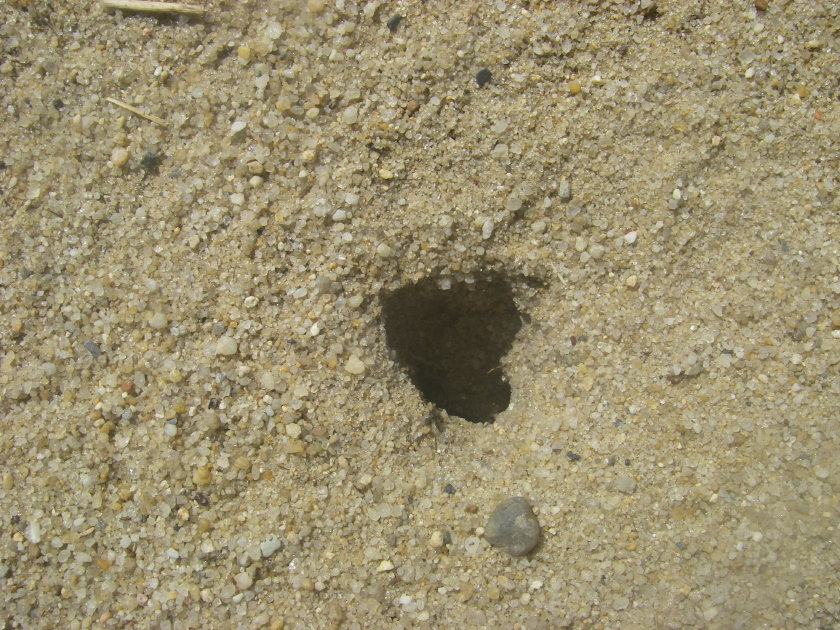No, it’s not a pretty thought. It’s not a pretty sight and it’s certainly not a pleasant experience. But it is the real world of terrapin conservation and so for the serious naturalist, it’s a necessary learning moment. Be thankful that the pictures are two dimensional and that there is no smell-vision key on the video clip.
Research from September 2000 revealed for the first time that a significant percentage of diamondback terrapins nests in the Wellfleet Bay system were being destroyed  by fly maggots. The infestation appears to begin at pipping when hatchlings poke openings in their eggshells allowing the odor of organic material to escape and to attract flies. Since Outer Cape hatchlings remain in their shells and underground for several days after pipping, maggots have the opportunity to attack an extremely vulnerable prey as the maggots work their way through the cracked shell to devour the exposed hatchling.
Pipped and Vulnerable (Upside-Down) Terrapin Hatchling
In most cases, the maggots begin with the umbilicus and enter the main body of the living hatchling through the yolk sac, hollowing out the baby from within. Thus, hatchlings and whole nests are destroyed by these insidious predators underground without ever being exposed for counting by researchers like nests preyed upon by more obvious predators.
Maggots Attacking Helpless Hatchling (Rescued)
Observations over the last nine seasons confirm the 2000 discovery and underscore the severe constraint this predation places on the number of live hatchlings that emerge on the Outer Cape each year. This season (2008) alone has seen more than half of all nests in the critical habitat of Lieutenant Island infested with maggots.
Maggots Consume Hatchling Embryo
Thankfully, the aggressive conservation protocols developed after the 2000 discovery have rescued more and more hatchlings each year from this infestation. By checking nests as they begin to pip and harvesting them at the first sign of maggots, our efforts have significantly increased the number of live hatchlings entering the system since the turn of the millennium. Even after the infestation has begun, our actions can save most hatchlings from the most heavily infested nests. We harvest the pipped eggs and remove all maggots before re-burying premature hatchlings in clean, moist soil to finalize the incubation process. These efforts have rescued thousands of hatchlings that would never have seen the light of day.
Hatchlings Rescued from Maggot Infested Nest
This particular nest on Turtle Point gave away its location by a concavity on the surface. As hatchlings pip and squirm around inside the egg chamber, sand gets displaced and this underground activity shows itself as ripples of the surface sand to the most seasoned turtle researcher. We were able to rescue 10 baby hatchlings from the devouring horde of maggots in this nest, hand-picking tiny maggots from limb cavities and off yolk sacs, then bathing the hatchlings in clean, fresh water for rehydration before release. So, a good day in the Land of Ooze where we saved an order of magnitude better than our goal of one turtle at a time.





